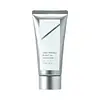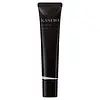What's inside
What's inside
 Key Ingredients
Key Ingredients

 Benefits
Benefits

 Concerns
Concerns

 Ingredients Side-by-side
Ingredients Side-by-side

Niacinamide
SmoothingWater
Skin ConditioningEthylhexyl Methoxycinnamate
UV AbsorberButylene Glycol
HumectantMethyl/Phenyl Polysilsesquioxane
Cyclopentasiloxane
EmollientBehenyl Alcohol
EmollientDimethicone
EmollientPolyglyceryl-4 Pentastearate
EmollientCaprylic/Capric/Myristic/Stearic Triglyceride
EmollientBis-Ethylhexyloxyphenol Methoxyphenyl Triazine
Skin ConditioningTrifolium Pratense Extract
Skin ConditioningAchillea Millefolium Extract
CleansingAspalathus Linearis Extract
Skin ConditioningMorus Alba Extract
AstringentAngelica Archangelica Extract
Skin ConditioningAlcaligenes Polysaccharides
EmollientDiglycerin
HumectantXanthan Gum
Emulsifying4-Hydroxybenzoic Acid
PreservativeTris(N-Hydroxyethyl)Hexahydrotriazine
PreservativeTitanium Dioxide
Cosmetic ColorantSodium Isostearoyl Lactate
CleansingPolyglyceryl-5 Stearate
EmulsifyingHydrogenated Coconut Oil
EmollientPolyvinylalcohol Crosspolymer
Potassium Hydroxide
BufferingTocopherol
AntioxidantStearic Acid
CleansingBehenic Acid
CleansingAluminum Hydroxide
EmollientSorbitan Sesquiisostearate
EmulsifyingPhenoxyethanol
PreservativeDisodium Stearoyl Glutamate
CleansingAcrylic Acid
Glycerin Methyl Ether
Phthalic Anhydride
Cetearyl Alcohol
EmollientC20 Olefin
Zinc Oxide
Cosmetic ColorantNiacinamide, Water, Ethylhexyl Methoxycinnamate, Butylene Glycol, Methyl/Phenyl Polysilsesquioxane, Cyclopentasiloxane, Behenyl Alcohol, Dimethicone, Polyglyceryl-4 Pentastearate, Caprylic/Capric/Myristic/Stearic Triglyceride, Bis-Ethylhexyloxyphenol Methoxyphenyl Triazine, Trifolium Pratense Extract, Achillea Millefolium Extract, Aspalathus Linearis Extract, Morus Alba Extract, Angelica Archangelica Extract, Alcaligenes Polysaccharides, Diglycerin, Xanthan Gum, 4-Hydroxybenzoic Acid, Tris(N-Hydroxyethyl)Hexahydrotriazine, Titanium Dioxide, Sodium Isostearoyl Lactate, Polyglyceryl-5 Stearate, Hydrogenated Coconut Oil, Polyvinylalcohol Crosspolymer, Potassium Hydroxide, Tocopherol, Stearic Acid, Behenic Acid, Aluminum Hydroxide, Sorbitan Sesquiisostearate, Phenoxyethanol, Disodium Stearoyl Glutamate, Acrylic Acid, Glycerin Methyl Ether, Phthalic Anhydride, Cetearyl Alcohol, C20 Olefin, Zinc Oxide
Water
Skin ConditioningEthylhexyl Methoxycinnamate
UV AbsorberDimethicone
EmollientDiisopropyl Sebacate
EmollientBehenyl Alcohol
EmollientGlycerin
HumectantPhenylbenzimidazole Sulfonic Acid
UV AbsorberTriethylhexanoin
MaskingButylene Glycol
HumectantBis-Ethylhexyloxyphenol Methoxyphenyl Triazine
Skin ConditioningSorbitan Stearate
EmulsifyingTriethanolamine
BufferingButyl Methoxydibenzoylmethane
UV AbsorberDiethylamino Hydroxybenzoyl Hexyl Benzoate
UV FilterPhenoxyethanol
PreservativeEthylhexyl Triazone
UV AbsorberChlorphenesin
AntimicrobialCarbomer
Emulsion StabilisingSucrose Cocoate
EmulsifyingSodium Hydroxide
BufferingSodium Stearoyl Glutamate
CleansingXanthan Gum
EmulsifyingParfum
MaskingDisodium EDTA
BHT
AntioxidantSodium Hyaluronate
HumectantVaccinium Myrtillus Leaf Extract
AstringentAlthaea Officinalis Root Extract
Skin ConditioningCamellia Sinensis Leaf Extract
AntimicrobialCI 14700
Cosmetic ColorantWater, Ethylhexyl Methoxycinnamate, Dimethicone, Diisopropyl Sebacate, Behenyl Alcohol, Glycerin, Phenylbenzimidazole Sulfonic Acid, Triethylhexanoin, Butylene Glycol, Bis-Ethylhexyloxyphenol Methoxyphenyl Triazine, Sorbitan Stearate, Triethanolamine, Butyl Methoxydibenzoylmethane, Diethylamino Hydroxybenzoyl Hexyl Benzoate, Phenoxyethanol, Ethylhexyl Triazone, Chlorphenesin, Carbomer, Sucrose Cocoate, Sodium Hydroxide, Sodium Stearoyl Glutamate, Xanthan Gum, Parfum, Disodium EDTA, BHT, Sodium Hyaluronate, Vaccinium Myrtillus Leaf Extract, Althaea Officinalis Root Extract, Camellia Sinensis Leaf Extract, CI 14700
Ingredients Explained
These ingredients are found in both products.
Ingredients higher up in an ingredient list are typically present in a larger amount.
Behenyl Alcohol is a type of fatty alcohol (these are different from the drying, solvent alcohols).
Fatty Alcohols have hydrating properties and are most often used as an emollient or to thicken a product. They are usually derived from natural fats and oils; behenyl alcohol is derived from the fats of vegetable oils.
Emollients help keep your skin soft and hydrated by creating a film that traps moisture in.
In 2000, Behenyl Alcohol was approved by the US as medicine to reduce the duration of cold sores.
Learn more about Behenyl AlcoholYou might know this ingredient as Tinosorb S or Bemotrizinol. It is a UV filter that covers both UVA and UVB rays.
This ingredient has two peak UV absorption peaks ( 310 and 340 nm) and is able to absorb both UV-A and UV-B rays. This ingredient works by preventing UV rays from reaching and damaging your skin.
On top of that - it is highly photostable and helps prevent the photodegration of other sunscreen ingredients such as avobenzone.
Tinosorb S is allowed in the EU, Australia, and Asia. It is close to being approved by the FDA and we'll hopefully get this ingredient in the U.S. by late 2025.
Fun fact: Tinosorb S is the most effective UV absorber at maximum concentration (measured by SPF) permitted in the EU.
This ingredient is oil-soluble, so your oil-cleansers will take this right off at night.
Learn more about Bis-Ethylhexyloxyphenol Methoxyphenyl TriazineButylene Glycol (or BG) is used within cosmetic products for a few different reasons:
Overall, Butylene Glycol is a safe and well-rounded ingredient that works well with other ingredients.
Though this ingredient works well with most skin types, some people with sensitive skin may experience a reaction such as allergic rashes, closed comedones, or itchiness.
Learn more about Butylene GlycolDimethicone is a type of synthetic silicone created from natural materials such as quartz.
What it does:
Dimethicone comes in different viscosities:
Depending on the viscosity, dimethicone has different properties.
Ingredients lists don't always show which type is used, so we recommend reaching out to the brand if you have questions about the viscosity.
This ingredient is unlikely to cause irritation because it does not get absorbed into skin. However, people with silicone allergies should be careful about using this ingredient.
Note: Dimethicone may contribute to pilling. This is because it is not oil or water soluble, so pilling may occur when layered with products. When mixed with heavy oils in a formula, the outcome is also quite greasy.
Learn more about DimethiconeEthylhexyl Methoxycinnamate is an organic compound that provides UVB protection. It often goes by the more common name of octinoxate. It is created from methoxycinnamic acid and 2-ethylhexanol.
Ethylhexyl Methoxycinnamate absorbs UVB rays with wavelengths between 280-320 nm. UV absorbers protect your skin by using chemical reactions to convert UV rays into heat and energy.
UVB (290-320 nm) rays emit more energy than UVA rays. They are capable of damaging DNA, causing sunburns and are thought to be linked to skin cancer.
The state of Hawaii has banned sunscreens containing octinoxate due to its potential impact on coral reefs. More research is needed to bridge gaps in this research. The European Union allows higher levels of octinoxate in sunscreens than the US and Australia.
Ethylhexyl Methoxycinnamate is oil soluble. It is not stable and may lose efficacy when exposed to sunlight.
Learn more about Ethylhexyl MethoxycinnamatePhenoxyethanol is a preservative that has germicide, antimicrobial, and aromatic properties. Studies show that phenoxyethanol can prevent microbial growth. By itself, it has a scent that is similar to that of a rose.
It's often used in formulations along with Caprylyl Glycol to preserve the shelf life of products.
Water. It's the most common cosmetic ingredient of all. You'll usually see it at the top of ingredient lists, meaning that it makes up the largest part of the product.
So why is it so popular? Water most often acts as a solvent - this means that it helps dissolve other ingredients into the formulation.
You'll also recognize water as that liquid we all need to stay alive. If you see this, drink a glass of water. Stay hydrated!
Learn more about WaterXanthan gum is used as a stabilizer and thickener within cosmetic products. It helps give products a sticky, thick feeling - preventing them from being too runny.
On the technical side of things, xanthan gum is a polysaccharide - a combination consisting of multiple sugar molecules bonded together.
Xanthan gum is a pretty common and great ingredient. It is a natural, non-toxic, non-irritating ingredient that is also commonly used in food products.
Learn more about Xanthan Gum